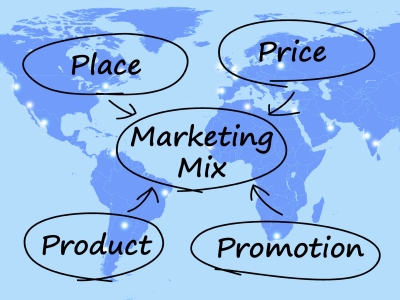Great clothes don’t make a great man, but they do make him look his best. Similarly, a logo design doesn’t define a business, but is part of the marketing materials that dress up company image.
On a simple level, a logo is an icon that can be tiny on a business card or huge on the side of a building. Made of stylized type, art or both elements, it is a company image reminding past customers and your potential market of who you are and what you do. Naturally, you hope this icon symbolizes nothing but good things to all who view it.
A logo is an expression of company identity and stability, no matter what size your business. It should appear on all marketing materials from business cards and traditional press releases to website and mobile marketing messages – such as sales alerts – sent by smartphones and other digital devices. But don’t mistake a logo for a brand.
Perceiving Brand
Graphic artist Jacob Cass of Just Creative says that brand is the ‘personality’ of an organization, product or service and is shaped by the perceptions of the audience.
Cass adds that brand is constructed in a customer’s mind, not on a designer’s table. It is based on public opinion about a company’s values and goals, which the company expresses by what it does, owns and produces.
Brand is reinforced through print and digital marketing materials, including letterhead, brochures, products, packaging, signage, office design, websites for mobile devices as well as desktop computers and anything visual concerning a company.
Choosing a Simple Logo Design
A company logo should appear on all marketing materials whether in print or virtual. Even if your office is in the basement of your home, a well-constructed website, good marketing materials and a simple yet attractive logo all polish business image.
A good logo is memorable, but not necessarily because it is clever looking. Instead, simple lines can make logotype and art easier to remember. The design company LogoBee notes that an abstract, complicated design can obscure a company’s message. It suggests testing your design by showing it to a friend and then, a week later, asking the friend to draw what she remembers.
A good example of an overly complicated design that didn’t last is Apple computer’s first logo in 1976. It featured an elaborate illustration of Sir Isaac Newton sitting under an apple tree and discovering gravity when he got bonked on the head.
Getting Carried Away with Color
The HongKiat.com design blog notes that the year didn’t end before Apple simplified its message of bright thinking and innovation by designing a sleek, apple-shaped icon. Nevertheless, the apple was a complicated, rainbow-striped piece of fruit.
Although the shape of Apple’s logo – complete with a missing bite – has been the same for decades, its color has changed over time to cool blue, jet black and its current silvery sheen.
Using too many colors in a logo over-complicates the art and may detract from its message. Selecting colors that are too trendy can cause the logo to look dated before long. These are important matters to sort whether you work with a professional artist or create your own art.
Grooming Your Image
You probably wouldn’t leave home for work without combing your hair or putting on shoes. Good grooming is important. Right? A well-groomed marketing mix is also important. In particular, designing a logo is an investment of time, money and soul searching about what image will best identify your services, products and personality. But don’t send your business identity off into the chill of the cybersphere or mailbox without giving it the warm, finishing touch of a company logo.

























Leave a Reply